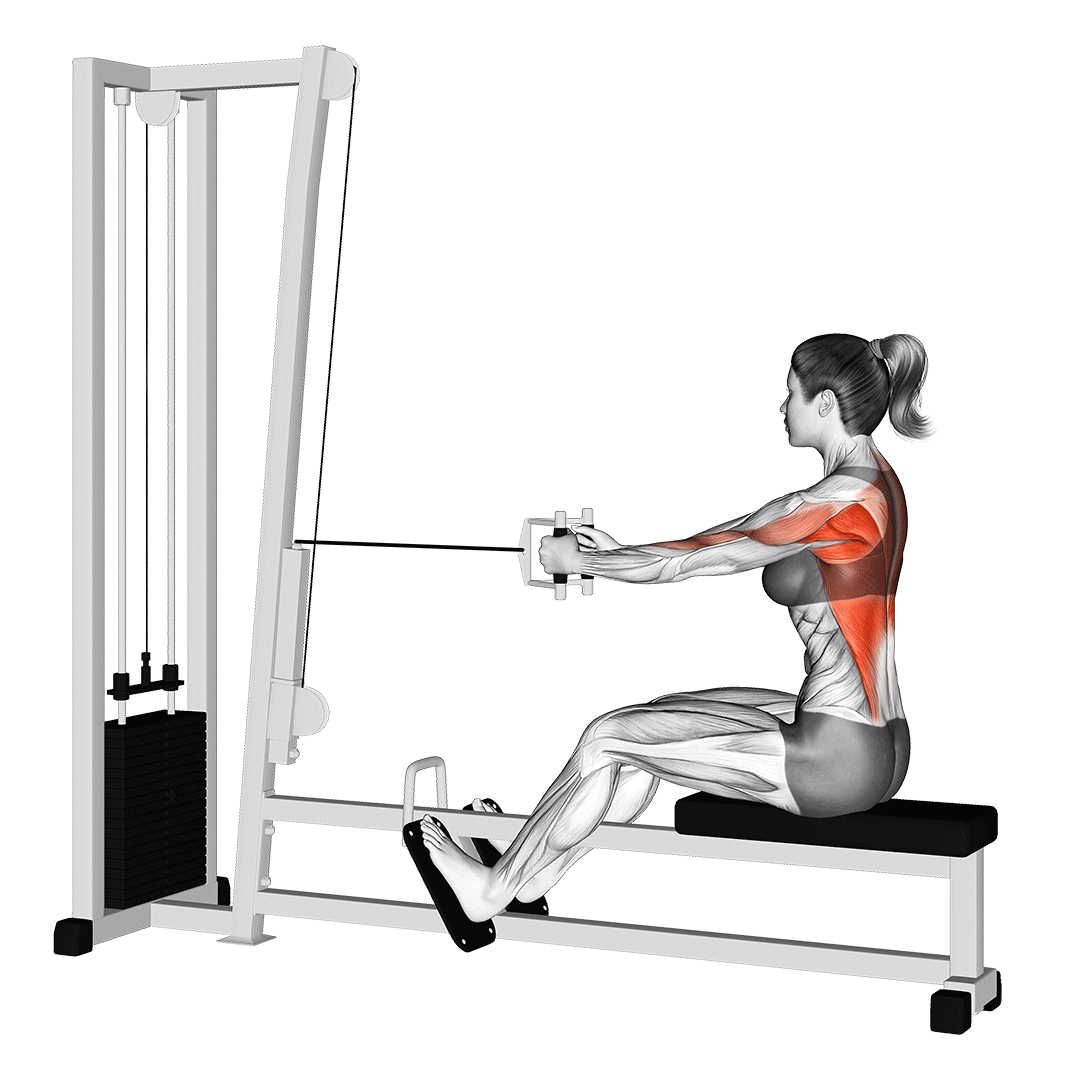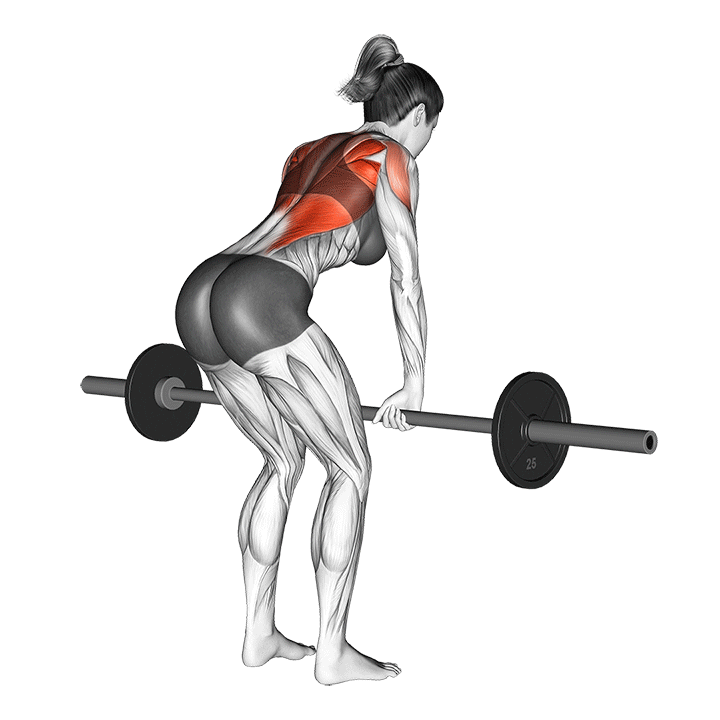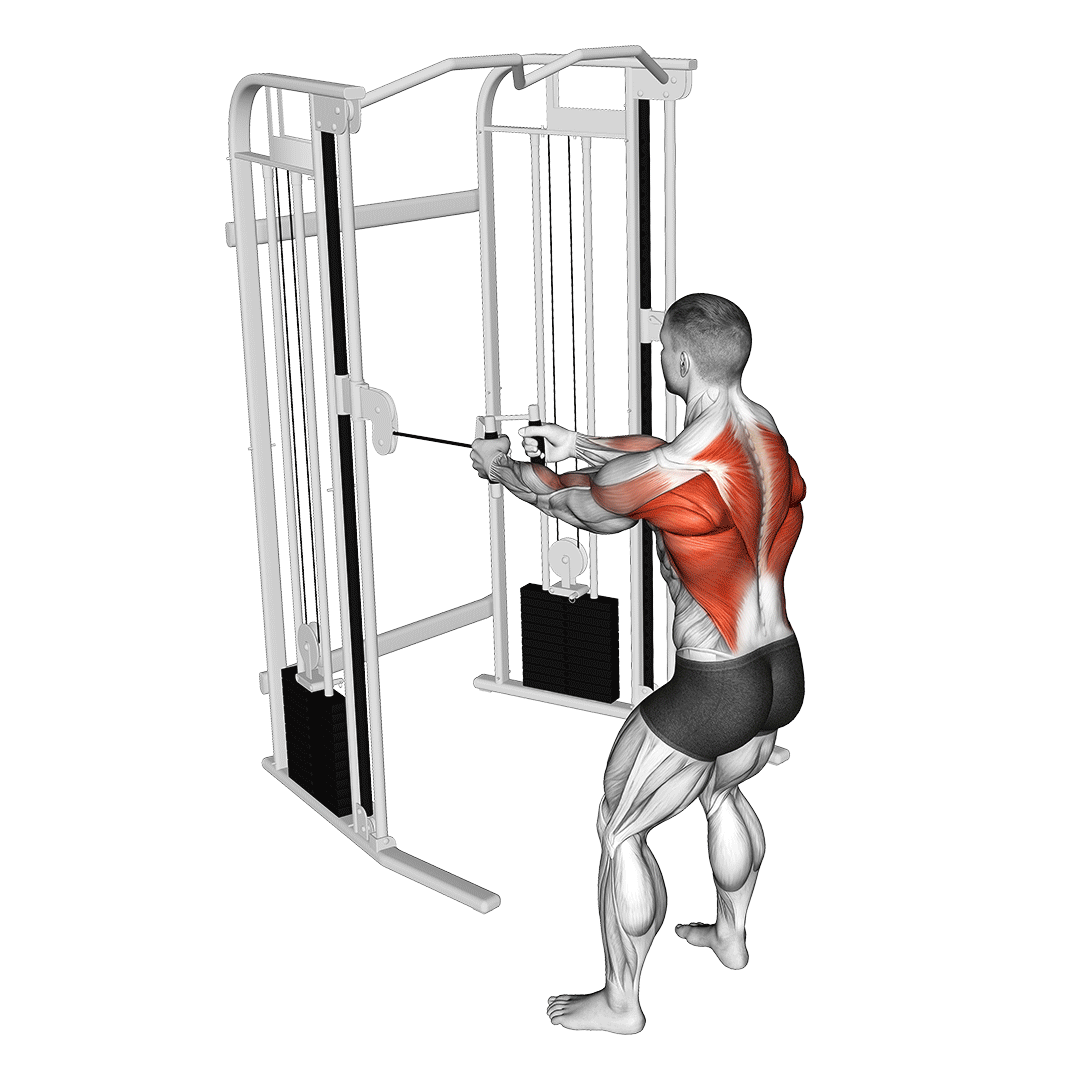What are the Benefits of Doing Cable Rows?
Machine cable rows are excellent for achieving a constant level of tension while the back muscles are in a stretched position, lending itself quite well to muscular hypertrophy and improvement of general pulling strength.
Benefits of Cable Machine Rows
Builds Mass and Strength in the Back, Rear Delts and Arms
Cable rows are such a widely practiced form of row because of their capacity to build both mass and strength throughout the entire body’s pull muscles.

As a result of its relatively large range of motion, high capacity for both volume and load, as well as a constant time under tension - muscular hypertrophy and neurological strength development is all but guaranteed.
In particular is the appearance of “thickness” in the back, where the muscles of the middle back such as the trapezius or rhomboids hypertrophy most readily from the exercise due to the angle of resistance involved.
Of course, to ensure this level of development occurs, lifters must ensure that their macronutrients are sufficient to support muscular growth and that they are following proper training technique to the letter.
Excellent for Improving Horizontal Pulling Strength
Whereas exercises like the lat pulldown or upright row build pulling strength along a vertical axis, the cable row (and similar types of row) instead build pulling strength along a horizontal one.

Horizontal pulling strength is far more functionally useful outside of a weightlifting setting, and often comes with significant boosts in terms of proper posture, antagonist-driven stability in pushing movements and the actual size of the upper back’s musculature.
Movements like the barbell row, inverted row and TRX row all directly benefit from previous performance of cable machine rows.
Comparatively Low Risk, Accessible and Highly Adjustable
Unlike exercises such as the bent over barbell row, the cable machine row is quite safe, even for complete novices who have yet to fully condition themselves to resistance training.
Such safety is further brought on by the accessibility and simplicity that is inherent to all machine-based exercises, allowing the lifter to adjust the machine to their own unique proportions as needed.

All of these characteristics total up to an exercise that is difficult to injure oneself performing, even if training to absolute muscular failure or if the performer is still learning the basics of proper lifting.
Nonetheless - remember to still pay close attention to proper technique as much as possible. A low risk of injury does not necessarily mean that injury is not a possibility.
Reinforces Elbow Flexion, Scapular Retraction, Back Neutrality and Shoulder External Rotation
Because of its large range of motion and capacity to strengthen the entirety of the middle and upper back musculature, cable machine rows reinforce quite a number of bodily mechanics.
The most impacted of these are scapular retraction and elbow flexion - of which will grow more stable and allow for a larger range with regular performance of the exercise.

In addition to the aforementioned biomechanics, lesser used actions like maintaining proper lower back neutrality and keeping external shoulder rotation are also reinforced, albeit to a slightly lesser degree considering their more static nature.
Improves Posture, Corrects Back Pain and Improves Back Mobility
Outside of a strictly performance perspective, cable machine rows can also be excellent for correcting a small number of physiological issues relating to weak or inflexible back muscles.
A few particularly common ones are a forward hunching posture at the cervical spine, poor shoulder rotation posture or even discomfort along the back of the shoulders or along the lumbar section of the back.
Other issues relating to instability, insufficient flexibility or mobility or imbalances of the back muscles can also be corrected with a measured amount of cable machine rows.
Cable machine rows and similar forms of controlled resistance exercise help correct these problems by strengthening any weak muscles that may be present, developing them to a point where they are symmetrical in size and strength or otherwise through extending their stable range of motion.
Remember to first speak to a medical professional if using cable machine rows for these purposes, as certain underlying causes can in fact be made worse through resistance training.
References
1. Lorenzetti, Silvio, Romain Dayer, Michael Plüss, and Renate List. 2017. "Pulling Exercises for Strength Training and Rehabilitation: Movements and Loading Conditions" Journal of Functional Morphology and Kinesiology 2, no. 3: 33. https://doi.org/10.3390/jfmk2030033
2. Fenwick, Chad M J et al. “Comparison of different rowing exercises: trunk muscle activation and lumbar spine motion, load, and stiffness.” Journal of strength and conditioning research vol. 23,2 (2009): 350-8. doi:10.1519/JSC.0b013e3181942019
